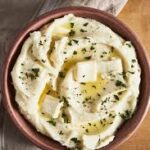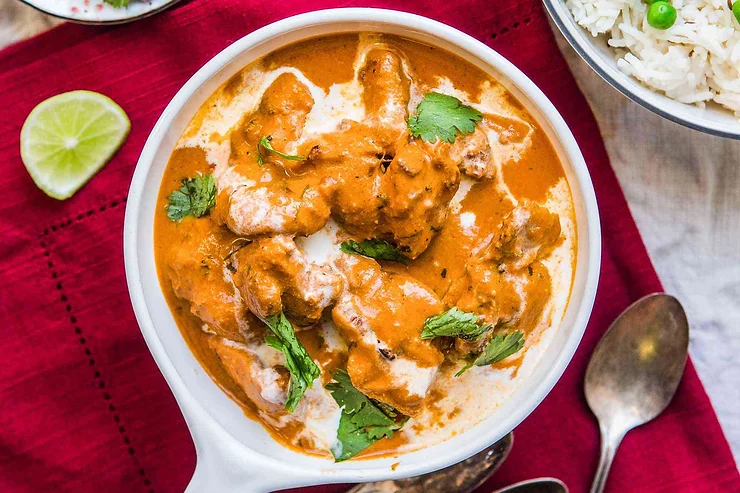Introduction
Mexican food constitutes a culture known for its tasteful colors, its history and the various delicious recipes such that there could hardly be any better food than tacos. Tacos are not only a food, they represent a Tradition, an Identity, plus they are a Street food which travels beyond borders. Real Mexican tacos with the passion for great produce, traditional cooking, and pre-Hispanic recipes let one get a taste of real Mexican cuisine. This brings us to the real subject of this article; the historical background, diversity, and cultural importance of true Mexican tacos, and why they differ from Tex-Mex_tacos.
Origins of Tacos
Despite the great popularity of those tortilla dishes, the origin of tacos is still rather obscure and it is thought that tacos have existed since the pre-Columbian period. The word “taco” has been originated from the word “tlahco” in Nanuet language which actually means half meaning referring to the placement of the food in the center of the tortilla.
At one time people associated tacos with the lower working class actually tacos were a form of food for the workers. Because the basic structure of the dish consists of a tortilla being wrapped around such items as meats, vegetables or beans, it was perfect for workers, who required a meal that was easy to eat while on the job.
Basically only corn tortillas were used when the first tacos were made since corn was the most domesticated crop of ancient Mexico. The Spanish arrived in the 16th century with Pork beef and Cheese and thus were incorporated into the Mexican diet. Centuries are passed and Taco starts to undergo changes that characterize the food according to different regions of Mexico.
Anatomy of an Authentic Mexican Taco
1-The Tortilla: They are simply made from a soft pliable corn tortilla; the kind of base and structure that forms the foundation of any taco, a true Mexican taco. Although flour tortillas are also employed especially in northern part of Mexico, corn tortillas represents an indelible part. These are consumed with masa made from corn and most of them are usually limited in size and may measure between a radius of four to six inches. These tortillas can be pliable or slightly fried in a griddle (comal) to give a better taste.
2-The Filling: The core of the taco, the stuffing can be very different from the other meals depending on the locality and availability of certain types of food stuffs. Common fillings include:
Carnitas: Meat, most often pork meat, which is marinated and then cooked on slow heat until it becomes tender and juicy.
Pastor: Thin pork that is marinated by dried chilies, spices and pineapple then roasted on a spit like shawarma.
Barbacoa: Another Mexican meat preparation that has always been slow cooked where the meat of lamb or goat is put in an underground barbecue pit.
Carne Asada: BBQ mainly referring to barbeque which entails preparation of beef through marination in citrus juices before broaching on a open grill.
Chorizo: A Mexican sausage prepared from ground pork and which is spiced up with help of chili peppers and spices.
Cochinita Pibil: Cochinita pibil is a taste truly original from Yucatan, its ingredients are marinated pork in achiote paste and sour orange juice and is steamed in banana leaves.
The Toppings: In real tacos, the toppings are only fresh and natural which do not masks the natural flavors of the stuffed ingredients. Common toppings include:
3-Cilantro: CILANTRO – Buying new cilantro adds freshness and gives an herbal overtone.
Onion: Such white onions that are very finely chopped, give a certain crispiness, and a certain sharpness in taste.
Lime: Lime juice improves the flavors and incorporates acidity into the dish.
Salsa: Let me mention here that there is a huge number of types of salsa that may vary by spiciness greatly. Some of the typical salsas are; verde made from tomatillos, roja originating from tomatoes and Pico de Gallo which is a fresh salsa from tomatoes, onions, and coriander.
Radishes and Cucumbers: These were usually used to accompany the food by garnishing them in order to have a crunch feel.
Guacamole: Also known as alligator pearls, guacamole is a crushed avocado accompanied with lime juice, cilantro and onion and while might be used as a garnish, it is mostly served as a condiment.
Regional Varieties of Tacos
Mexican polity’s geographical and cultural conditions contributed to the creation of numerous taco types, which are distinguished by their specific qualities and tastes. Some of the most popular regional taco styles include:Some of the most popular regional taco styles include:
Tacos al Pastor (Central Mexico): Although commonly associated with the Mexican cuisine, Tacos al Pastor were born in the capital of Mexico, Mexico City, and the meat preparation resembles Middle Eastern shawarma, thin slices of pork are cooked on vertical spit.
The pork is normally soaked in a mix of dried chili peppers, spices and pineapple which gives this food a tangy taste. The meat is carved from the spit and placed between small corn tortilla and topped with chopped onions, cilantro and pineapples.
Tacos de Canasta (Central Mexico): Another type of taco that is baked and is served hot is the basket tacos which are also referred to as steam tacos. They are usually cooked with beans, potatoes or chorizo and sold by street vendors all over Mexico city.
Tacos de Cabeza (Northern Mexico): It is a Tijuana-style taco which is prepared with the meat of a cow’s head, cheeks, tongue and even the eyes. The meat is simmered for many hours until it’s soft and then served on corn tortillas with toppings of fresh coriander and chopped onions, and salsa.
Tacos de Pescado (Baja California): Fish tacos originated from the Mexican state of Baja California and are typically made of fish with a coat of dry batter and deep fried, then served with green cabbage, crema which is Mexican sour cream or better still, hot sauce. They are very popular especially along the coastlines and are extolled everywhere in the world.
Tacos de Barbacoa (Central and Northern Mexico): Barbacoa is the process of slow cooking of meat, especially lamb or beef, on an underground pit, to get the succulent juices in it. The meat is then pulled apart and is placed in corn tortillas with onions, cilantro as well as lime juice.
Tacos de Cochinita Pibil (Yucatan Peninsula): This dish which originated from the Yucatan Peninsula is pork meat that undergoes a process of marinating in achiote paste and sour orange juice then wrapped in banana leaves and slow cooked. The outcome produces moist and juicy meat which is usually accompanied by pickled red onions and habanero salsa.
Cultural Significance of Tacos
Thus, Taco can be considered not only as a true Mexican meal but as a reflection of the culture of the country and the variation of the palette of a Mexican people. Tacos, in general, were Mexico’s leading food that people consumed from street vendors in the active city markets and fairs to family and friends.
Mexican food especially tacos are normally taken at street stalls referred to as ‘taquerías’. These are familiar places that the Mexican people visit for meal, conversation and to enjoy their food from their region.The big cities are identified as follows.The major cities are as follows. This is the work of the professionals referred to as taqueros most of who have been in the business for well over a number of years and who prepare each taco very carefully. Tacos are also a part of the Mexico consummation and events the likes of a holiday or festivals.
For instance, during the occasions such as the Hispanic celebration of “Dia de los Muertos” or Day of the Dead some of the foods oered to the dead are tacos. Tacos are also consumed in the “Cinco de Mayo” affair where folks indulge other forms of foods and beverages.
Global Influence of Mexican Tacos
Ingredients Mexicans actually got into the culinary global map through the lense of their tacos. Tacos have proven popular worldwide; they have to be found from the wheels of L.A. to the tables of Tokyo.
Tacos also do not exclude anyone because one can basically add or remove whatever one wants to cater to that individual’s tastes or health restrictions. Recently there has been a resurgence of actual Mexican hot plate, and the people involved in the food industry look forward to bringing the natural taco recipes to life.
This has resulted in the art of making tacos to be revamped and the emphasis placed on purchasing local fresh ingredients as well as paying respect to the Hispanic heritage of this dish.
Conclusion
Traditional Mexican tacos are not only a delicious dish but it also represents the history of Mexican society. It is a tale of cultures, ingredients and recipes that have been handed down from one generation to another. Tacos are meant to be eaten whether in the crowded area of Mexico City’s street market or during family dinner- showing the true essence of Mexico. It can therefore be argued that as tacos becomes more and more popular in the global markets then it becomes important to acknowledge its roots.
Only thus the phenomenon of authentic Mexican tacos can be traced to its origins and the foundational practices which have made this simple food an icon in the contemporary world. Whether you’re a professional taco food er or a beginner in the world of Mexican food, nobody can explain just how wonderful this Mexican invention is when you savor tacos.











